Polypipe supplies pipes to help Whitby Lobster Hatchery, working to create a sustainable future for the Yorkshire coast
Wednesday 6th July 2022
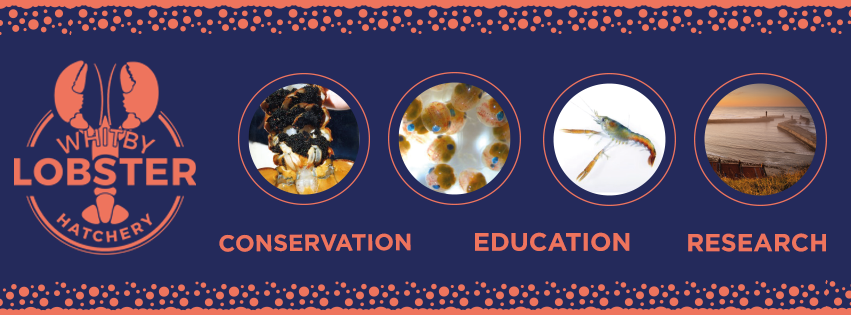
Back in 2020, the up-and-coming Whitby Lobster Hatchery featured on BBC Look North in a segment which highlighted their efforts to save the shellfish industry from overfishing by aiming to release 100,000 juvenile lobsters into the sea each year.
Lobster is thought to have been consumed by humans as far back as the prehistoric period, but as demand increases it is important that the UK Lobster population is managed to guarantee long term species survival.
The prestigious Whitby fishing heritage was built upon an abundance of white fish, but as the white fish industry collapsed due to overfishing and mismanagement, Whitby Lobster Hatchery are keen to make sure a repeat performance does not happen for the lobster population.
Having seen the segment, our Environmental and Sustainability Manager, Simon Mason, got in touch with the team to see if we could help. This resulted in Polypipe Building Products donating HDPE pipe, adaptors, elbows, and connectors to the project, allowing fresh seawater to be pumped into the tanks at the hatchery.
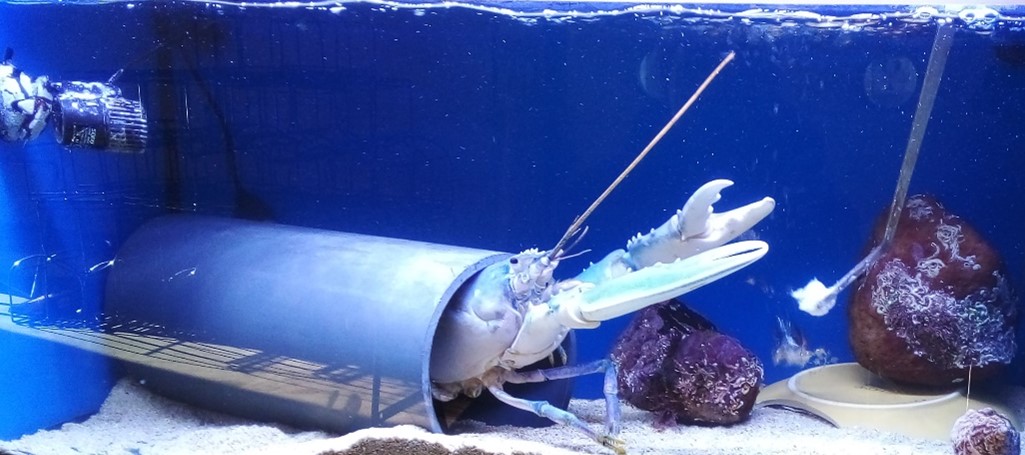
BLUE MEANIE - A rare blue lobster currently being cared for at the hatchery. Donated by a local fisherman
who recognised the genetically rare colouration which will hopefully be passed on to some of its offspring.
The small and dedicated team are working to create a sustainable future for the Yorkshire coast, and the local Whitby area by offsetting the number of lobsters caught by Whitby’s fishing fleet and protecting the region’s lobster industry for generations to come.
Alongside the establishment of the hatchery, they also aim to provide an educational and interactive outreach and education programme to allow members of the public and school groups to learn about Whitby’s unique fishing heritage and the huge different that marine conservation can make.
So how does it work?
As a current conservation measure, fisherman who catch females that are carrying eggs will return them back to the water after marking their tails with a V notch, so that other fisherman are alerted to their breeding female status and can return them to the ocean if caught again.
To further safeguard the population of lobsters around the UK, there are now lobster hatcheries in Cornwall, Northumberland, and the Orkneys. These hatcheries have had considerable success in increasing the Lobster population for sustainable fishing. Fisherman in these areas donate breeding females with eggs present to the hatcheries, where the eggs are hatched and immature lobsters are reared for 4-5 weeks, before then they are returned to the sea with their mothers.
This method increases the survival rate to adult from less than 0.1% to over 30%. Juvenile lobsters will then take 5-7 years to grow to market size and during this time they will reach sexual maturity and begin to release eggs of their own.
It is their belief that this conservation method, alongside effective management, will protect lobster fishing in Whitby by strengthening local lobster stock and securing jobs for Whitby’s fishing fleet.
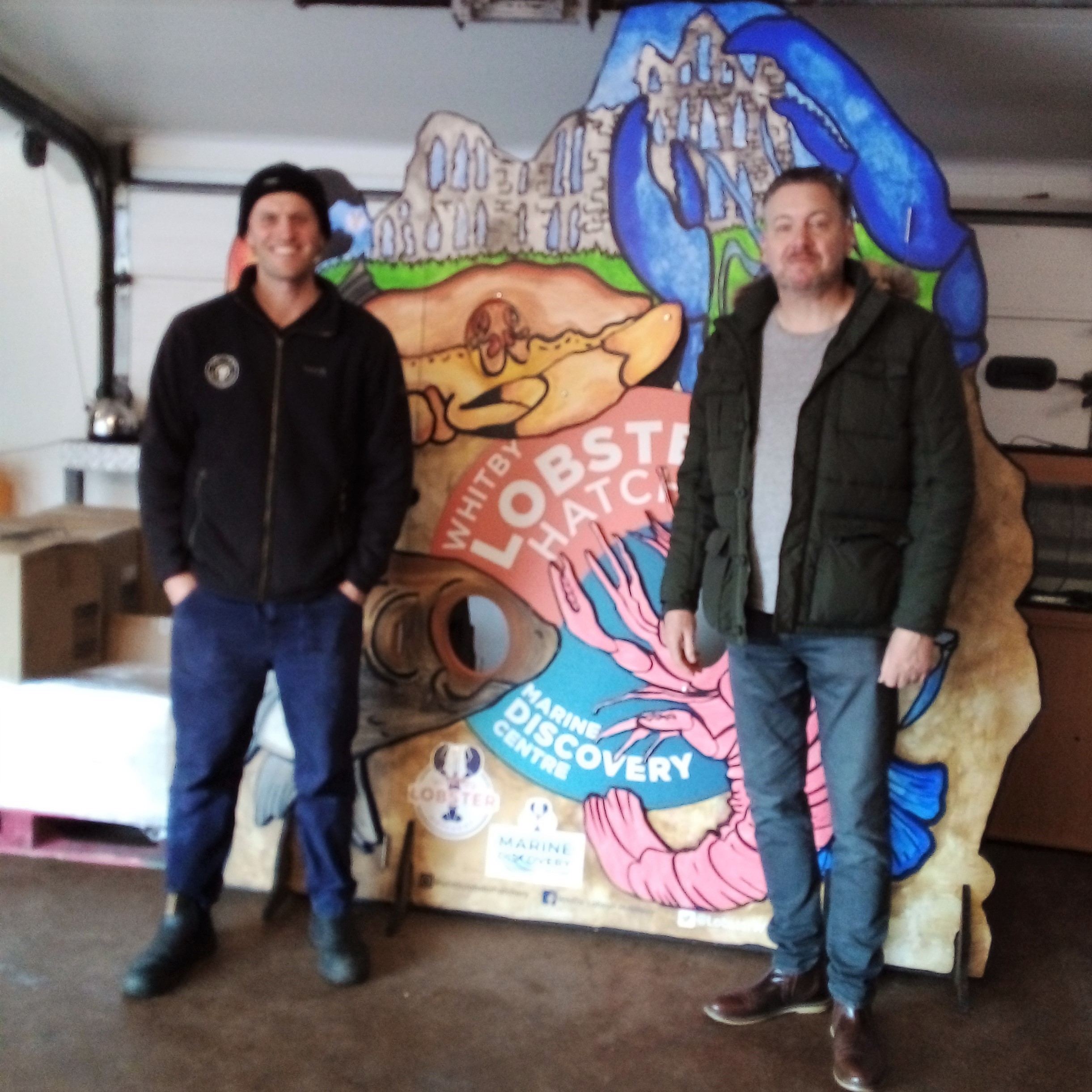
Polypipe Building Products Environmental and Sustainability Manager Simon Mason (right)
visits the Lobster hatchery to meet with the project manager Joe Redfern (left).
In January 2022, Simon arranged to meet up with the project manager at Whitby Lobster Hatchery.
I stayed over for a weekend in Whitby to see the progress of the lobster hatchery arranging to meet up with Joe Redfern, the Project Manager who have me a tour of the facilities and introduced me to some of its inhabitants.
The hatchery houses lobsters such as Blue Meanie (pictured above) and the shy but amusingly named Lemony Snicket, an all-orange lobster, another rare genetic condition.
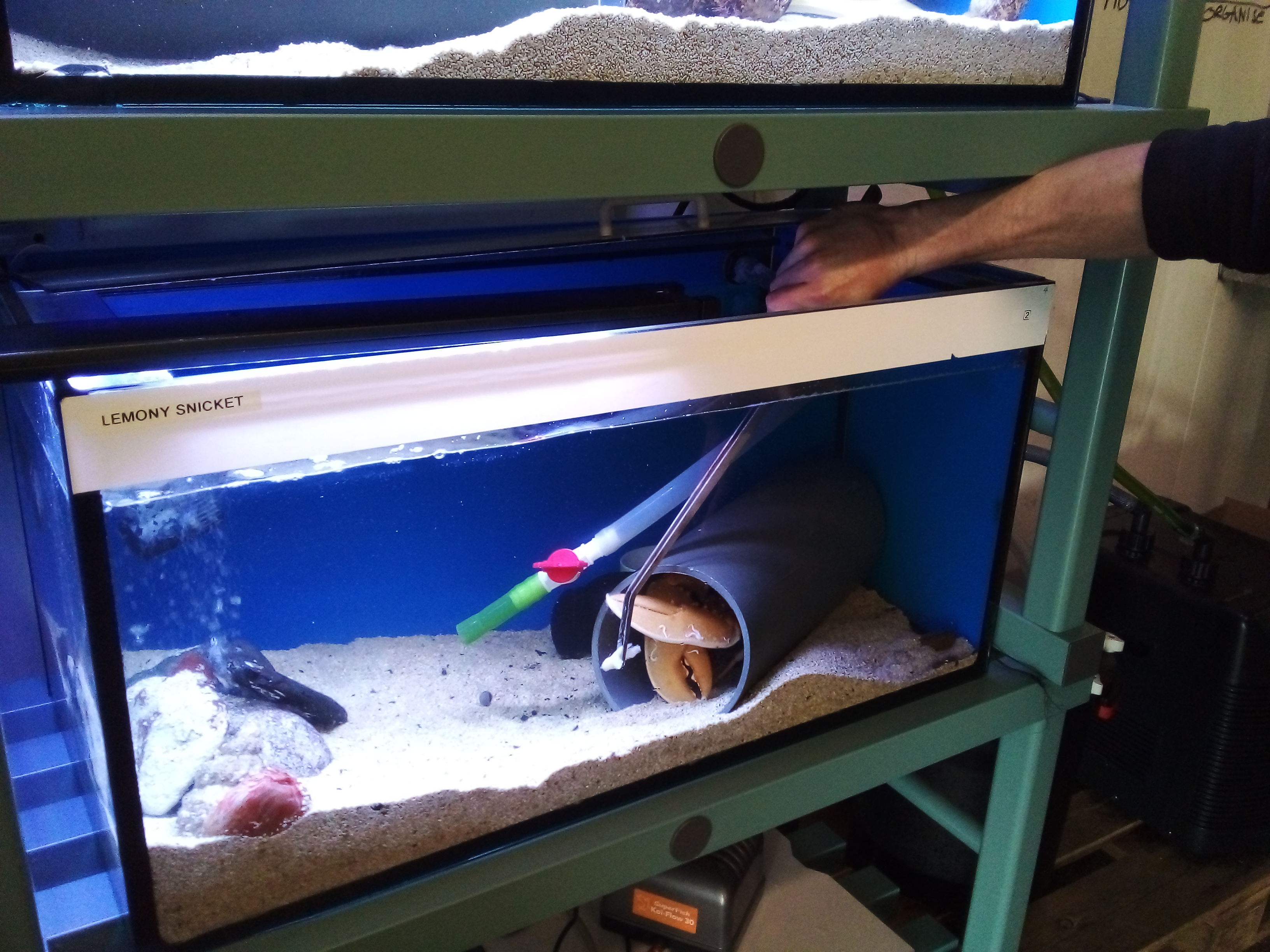
The lobster is a male that was again donated by a fisherman. In the photo (pictured above), we were trying to coax him out of his ‘cave’ with a white piece of fish (the trimmings of fish are donated to the hatchery by local fisherman and fishmongers). Unfortunately, this was as far as he was tempted out, however you can observe that his claws are bright orange, in stark contrast to Blue Meanie.
Most lobsters are found around our coasts and are mottled browns and greens with hints or patches of blue, white and orange – which helps them blend into the seabed.
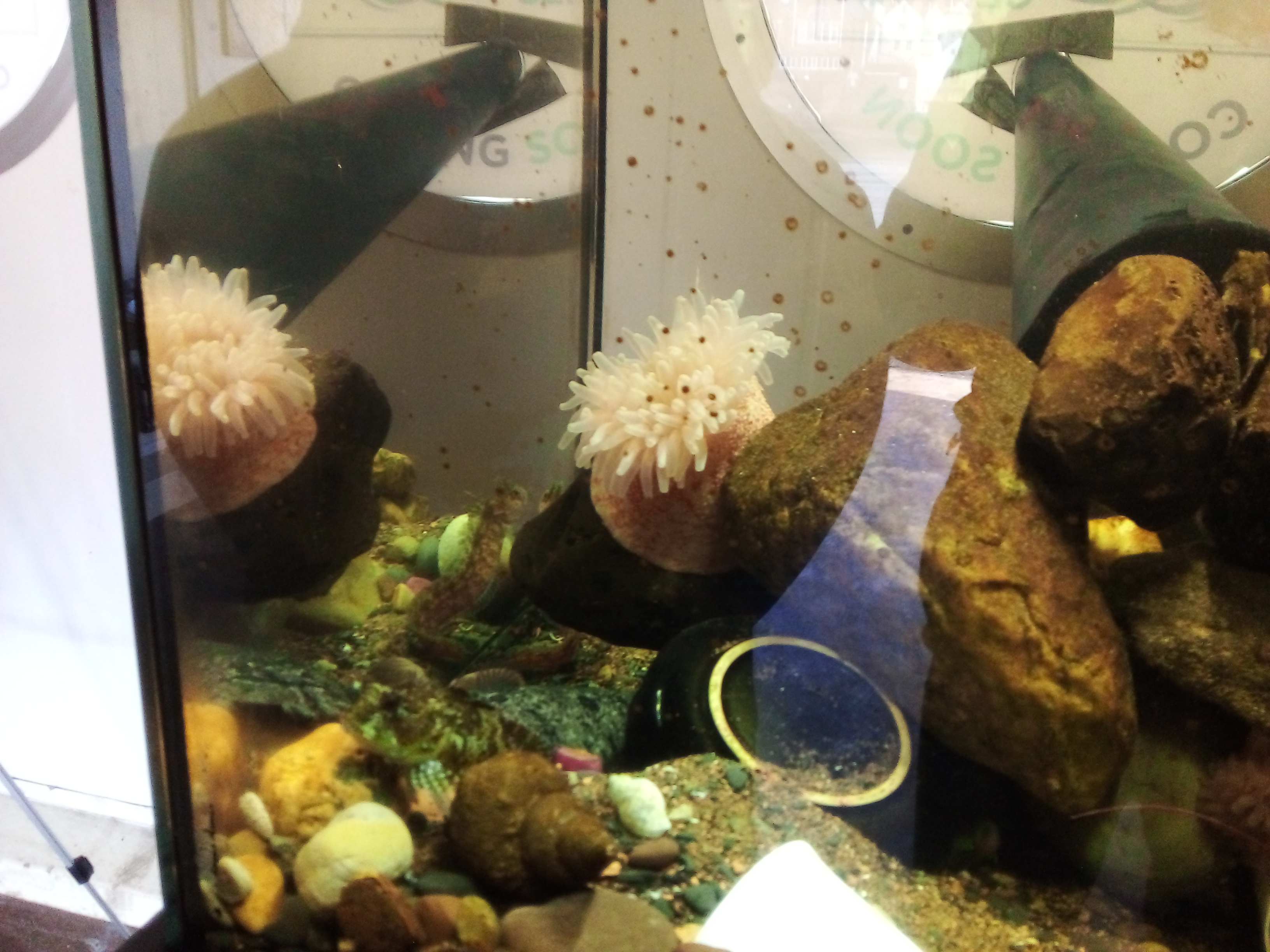
In addition to lobsters, the hatchery currently has a small aquarium containing native coastal fish species, again donated by fisherman. These specimens will be transferred to a large display aquarium once the facilities are fully constructed.
The hatchery is still in the design and construction phase with various tanks currently being housed in the harbourside building that will be transformed into the hatchery and visitors centre in the near future.
The tanks in the facility will be supplied with fresh seawater via pipes donated by Polypipe Building Products.
We look forward to seeing the progress at the Whitby Lobster Hatchery and wish them all the best of luck for the future.
For further information, visit www.whitbylobsterhatchery.co.uk.


